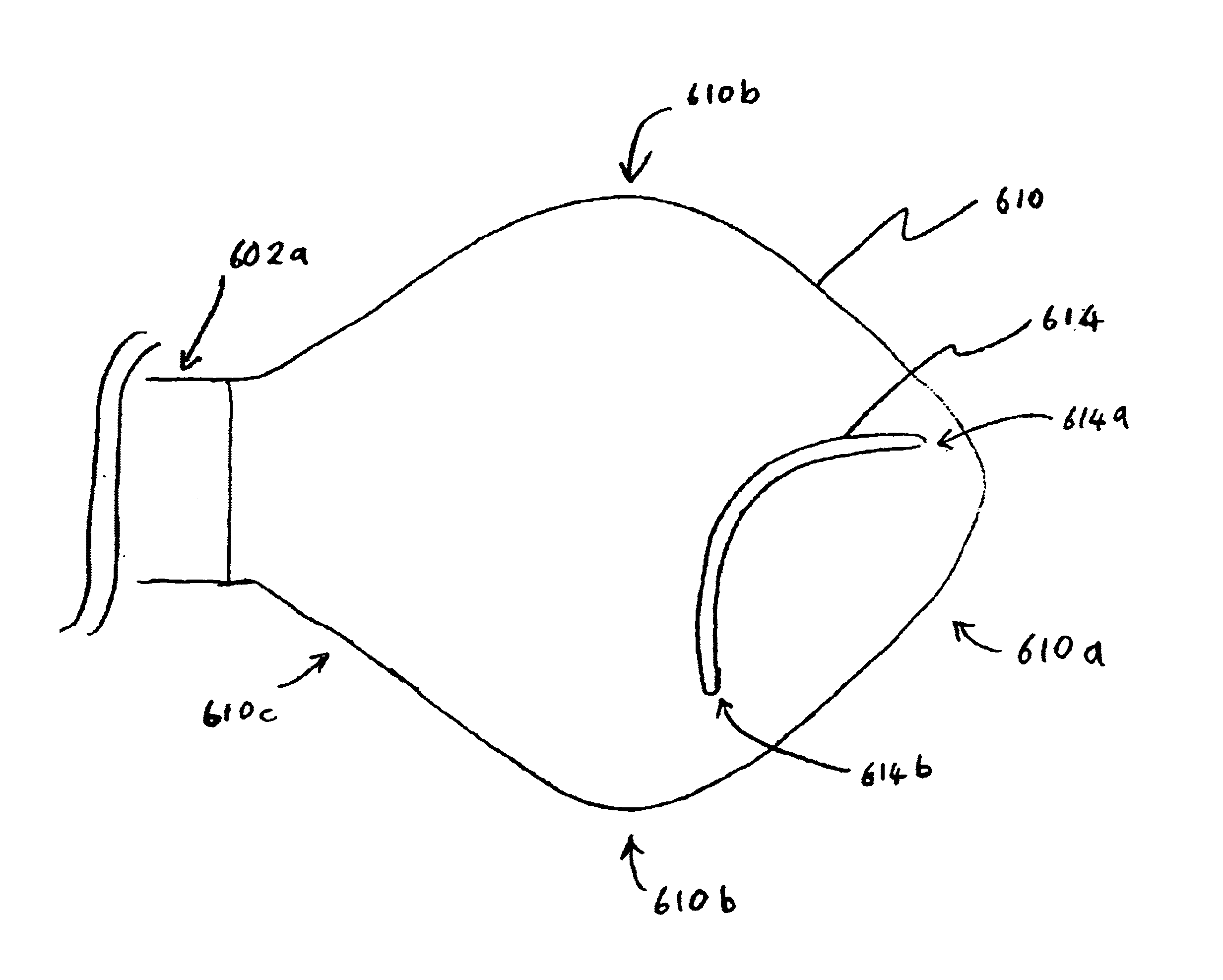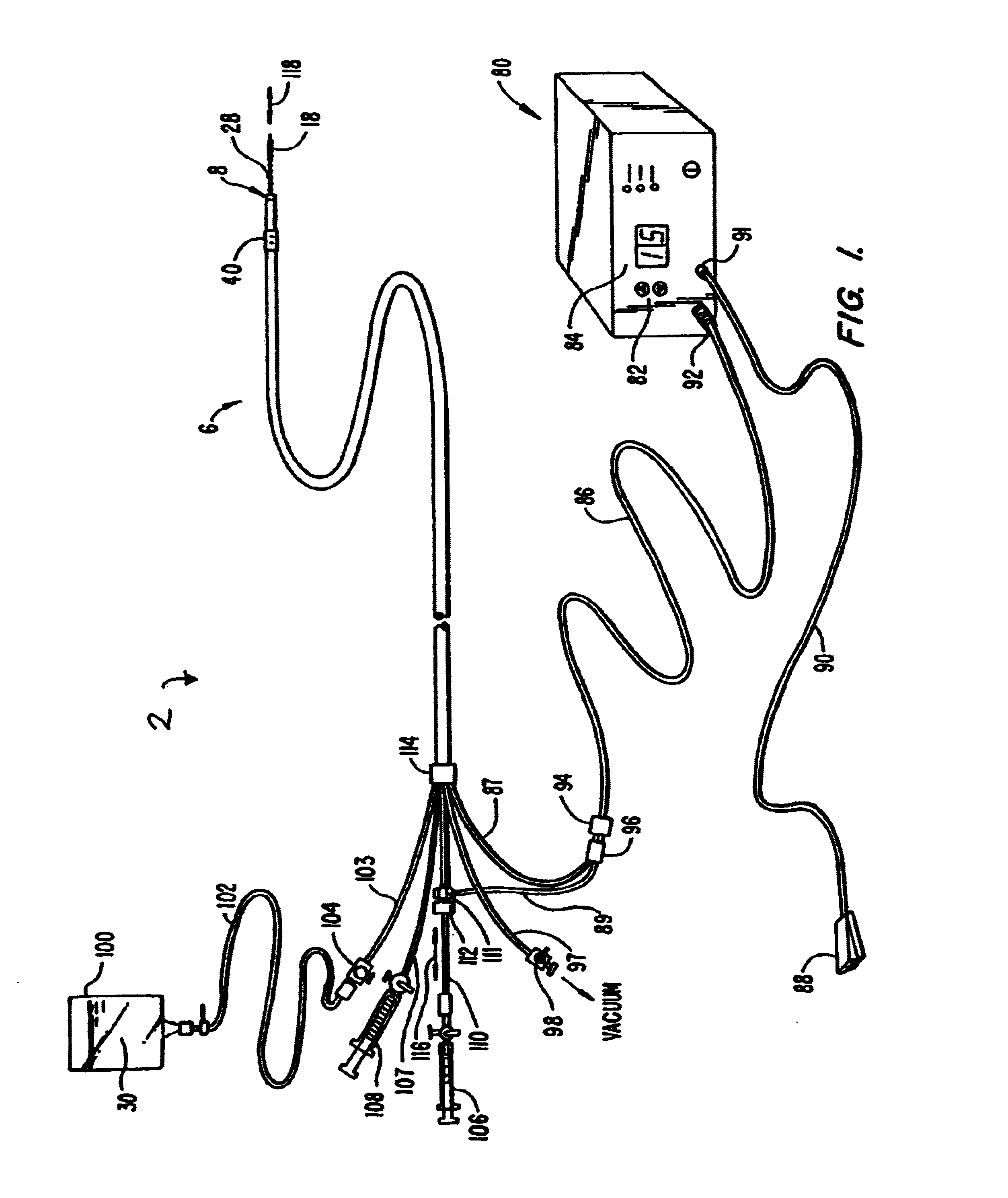Electrosurgical systems and methods for recanalization of occluded body lumens
a technology of electrosurgical and occluded body, applied in the field of electrosurgical systems, can solve the problems of affecting the operation, affecting the operation, and affecting the effect of the procedure, so as to minimize the current flow through the stent, and eliminate the potential for contact
- Summary
- Abstract
- Description
- Claims
- Application Information
AI Technical Summary
Benefits of technology
Problems solved by technology
Method used
Image
Examples
first embodiment
tissue ablation region 8 of catheter 6 is shown in FIGS. 3A and 3B. As shown, two active electrodes 50a and 50b are secured within an electrically insulating support member 34. The electrodes 50a, 50b are preferably composed of a refractory, electrically conductive metal or alloy, such as platinum, titanium, tantalum, tungsten, stainless steel, gold-plated, copper, nickel, and the like. The support member 34 is secured to the distal end of catheter 6 with a biocompatible adhesive 60 between support member 34 and outer sleeve 36. An electrically insulating sleeve 54 preferably extends above the distal plane of active electrodes 50a, 50b by a distance Hs. A central lumen in support member 34 provides a passageway for guide wire 28 that permits axial displacement and rotation of tissue ablating region 8 relative to guide wire 28.
In an exemplary embodiment, the support member 34 will comprise an inorganic insulator, such as ceramic, glass, glass / ceramic or a high resistivity material, s...
third embodiment
tissue ablation region 8 is illustrated in FIGS. 6A and 6B. Many of the elements of this embodiment are the same as those of previously described embodiments, and therefore their description will not be repeated. As shown, a single active electrode 200 is secured within support member 34. Active electrode 200 preferably has an L-shaped distal end so that a distal portion 202 of electrode 200 extends radially outward along the distal surface of support member 34. As before, catheter 6 / electrode 200 is rotated in both directions, as the region 8 is advanced through the lumen to recanalize the lumen.
fourth embodiment
tissue ablation region 8 is illustrated in FIGS. 7A and 7B . Many of the elements of this embodiment are the same as in previous embodiments, and therefore will not be repeated. As shown, six active electrodes 66a-66f are secured within inorganic support member 34. An annular irrigation lumen 56 and an aspiration lumen 58 are provided to inject electrically conductive fluid 30 and remove gaseous products of ablation 48 from the site of recanalization. When high frequency voltage is applied between the return electrode 28 and active electrodes 66a-f, a vapor layer 64 forms at and around active electrodes 66a-f with concomitant volumetric removal (ablation) of the occlusive media 14. For this embodiment and that shown in FIGS. 8A and 8B, rotation of catheter 6 may be limited to + / −30 degrees due to the greater number and circumferential distribution of active electrodes. The power or current supplied to each electrode 66a-f may be individually controlled by active or passive mechanism...
PUM
 Login to View More
Login to View More Abstract
Description
Claims
Application Information
 Login to View More
Login to View More - R&D
- Intellectual Property
- Life Sciences
- Materials
- Tech Scout
- Unparalleled Data Quality
- Higher Quality Content
- 60% Fewer Hallucinations
Browse by: Latest US Patents, China's latest patents, Technical Efficacy Thesaurus, Application Domain, Technology Topic, Popular Technical Reports.
© 2025 PatSnap. All rights reserved.Legal|Privacy policy|Modern Slavery Act Transparency Statement|Sitemap|About US| Contact US: help@patsnap.com



